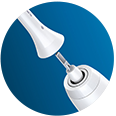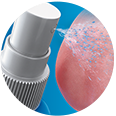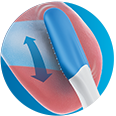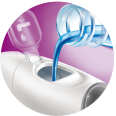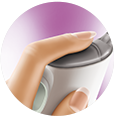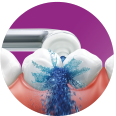1 min read - Alif Moosajie

Alif Moosajie
Dentist, Best Young Dentist 2016
Introduction
Suffering with sensitive tooth pain is no joke. That sudden pain can be either short-lasting or linger for a while. Sensitivity can be due to several causes; it can be managed at home, but sometimes may require help from your dental professional. Article summary: What can cause tooth Sensitivity?

Tooth Decay
The tooth can become decayed and a cavity can form exposing the inside layers of the tooth. This normally causes intense sensitivity when eating sweet things. Reducing the frequency of sugar in your diet is the best way to avoid tooth decay. Reducing sugar frequency can also help you reduce your risk of general health problems such as obesity and diabetes. The best way of managing tooth decay is to see your dental professional, where a filling or a repair of a filling may be required.
Hard food or trauma
The tooth can be damaged by hard food or by trauma of some kind. If it fractures that can also cause the under layers of the teeth to be exposed. This would normally cause a sudden sensitivity to cold and possibly hot. Sometimes this can be managed with soft food diet to allow the tooth to settle, other times this may need to be managed by the dentist for repair. It’s best to get it checked out with a dental appointment to be sure.
Gum recession
Gums around the tooth can shrink away or recede and this can expose the neck of the tooth. This can happen over time or through issues such as gum disease. When the gum recedes back the underneath layers of the teeth are no longer covered and this vulnerable area of the tooth is exposed to hot or cold causing pain in the nerve. Once the gum has receded it cannot be reversed, that is why it is important to remove plaque thoroughly to avoid gum disease and take care not to over-brush. Electric toothbrushes with a pressure sensor can help you avoid this.
Treatment of Tooth Sensitivity
The easiest treatment for sensitivity is to try to cover the entrance to the exposed areas of the teeth. This can be achieved at home using toothpastes containing ingredients specifically designed to target these sensitive areas. The ingredients within the toothpaste stick to the teeth and provide relief of sensitive symptoms.
Use of Sensitive toothpaste

There are many sensitive toothpastes on the market and a sensitive toothpaste can be used in one of two ways:
Recommended

-
- Play Pause
- Play Pause
Philips Sonicare 3100 series Sonic electric toothbrush with accessories
HX3673/14
Goodbye manual toothbrush. Hello Sonic technology.
Sonic technology combined with our brush action gently removes plaque up to 3 x better* than a manual toothbrush.
See all benefitsAvailable in:
-
- 4-pack
- Standard size
- Click-on
- All-round cleaning
-
- Up to 20x more plaque removal
- Up to 15 x healthier gums
- Up to 100% whiter teeth
- Soft Bristle
- Compatible with all Sonicare handles except Philips One and Kids
£29.99* -
- Quad Stream technology
- Pulse waves guide as you go
£119.99*
Key take away:
Tooth Sensitivity is hugely common and can be managed by a mixture of at home treatments or visiting your dental professional. Take care to brush gently and thoroughly and this will help maintain good oral hygiene without damaging your gums. The management of sensitivity is normally straightforward but visit your dental professional to rule out any further problems.
Our five-step routine for a healthy smile
Clean that
tongueClean that tongue
Tip: Remove bad breath bacteria that settle overnight by cleaning your tongue first thing.
Brush those
teethBrush those teeth
Fact: Acidic breakfast foods can weaken your enamel for about 45 minutes after you've eaten.
Tip: Brush before breakfast, and rinse with alcohol-free mouthwash after you've eaten.
Blast that
plaqueBlast that plaque
Tip: 40% of each tooth is hidden by its neighbor. Remove plaque from between your teeth before you brush, so your toothpaste can work its magic.
Replace that
brush headReplace that brush head
Fact: As your bristles wear out they start to remove less plaque.
Tip: If your blue reminder bristles fade before three months of use, it's time to replace your brush head.
Whiten that
smileWhiten that smile
Fact: Over four million patients whitened to a beautiful, white smile with Philip Zoom!
Tip: Special occasion coming up? Whitening can give you a brighter, more confident smile.
















